Local contrast enhancement
NB. Recent versions of the program have new features which provide a different and easier way of achieving the same effect described here. This tutorial is left up for reference but try this one first.
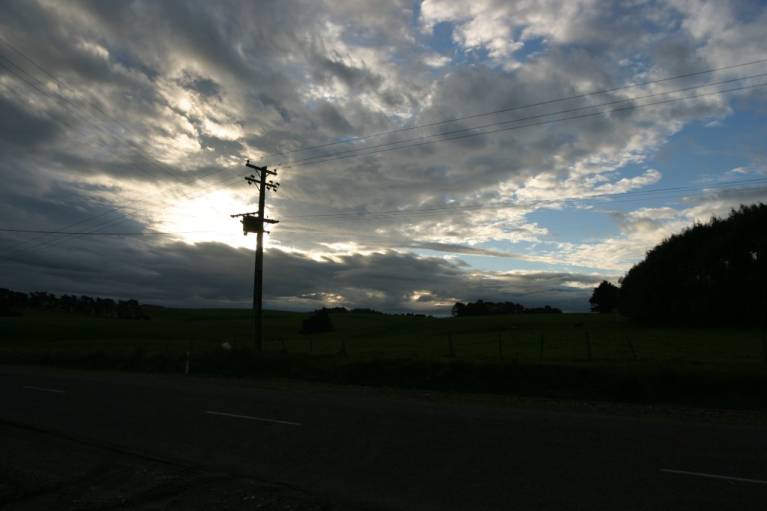
Typical boring late afternoon scene shot from our gateway.
I could see a lot more of the surrounding countryside than the camera did
because of the way the human eye works. As our concentration moves around
a scene the eye adapts in a way no camera can manage. It automatically
adjusts its sensitivity and the brain builds up a picture in its minds eye
that allows us to see both the relatively dark landscape and a dramatic sky.
The proper way to capture such images with a camera is to put it on a tripod
and make two exposures - using exposure compensation expose one image so that
the landscape is correctly photographed with a slow shutter speed and the
second identical image using a much faster shutter speed for the dramatic sky.
These images can then be merged digitally later [subject of a future tutorial?].
However tripods are a pest and it is not always even possible to use this
technique particularly if there is a moving object such as an animal in
the scene.
Using the gamma feature found in many programs (including Variations) it is
often possible to bring out a lot of detail in the foreground landscape - but
this comes at the expense of badly washing out the sky.
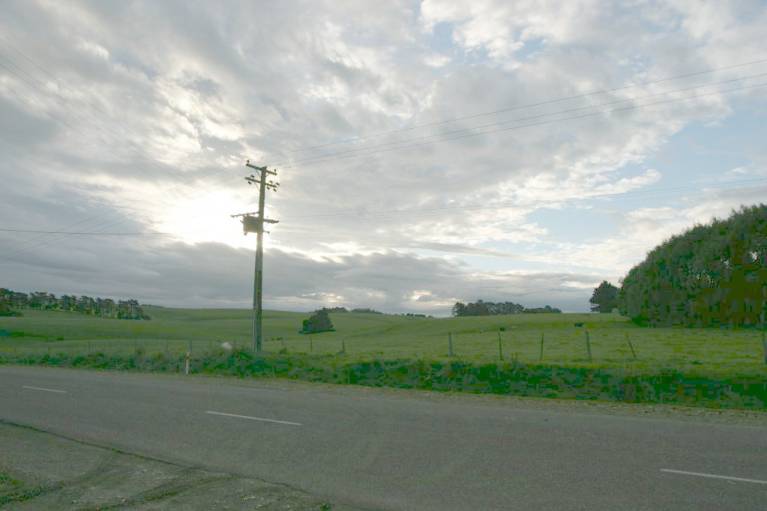
To avoid this in Variations we create a graduated mask that concentrates the
effect on the areas of the image we most want to change. Thus:
Click menu, choose "Edit mask..."
Choose the fill tool in the mask editing toolbar.

Go with the default values of the fill tool and drag out a graduation
from near the top of the dark tree at the right to near the bottom of
the image.

This mask attenuates the amount of effect that will applied to the image.
Areas of the mask strongly red tinted get lots of change. Areas with little
or no red tint aren't modified much at all.
Choose the gamma effect and click to increase image gamma.
Around 300% is about right for this image.
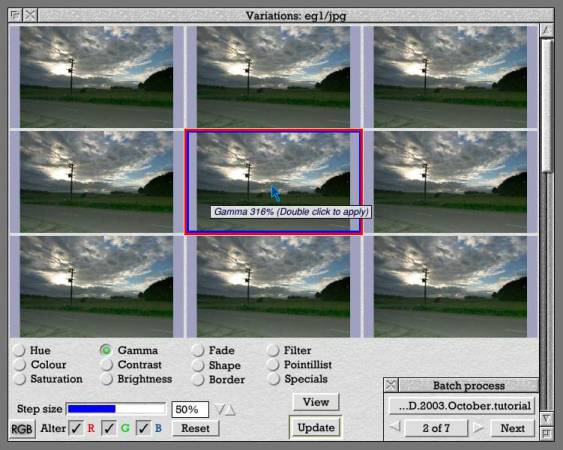
Now the foreground detail is visible and the sky still looks ok, but it could
do with being a bit more dramatic. To avoid messing up our newly revealed
foreground landscape we invert the previous mask so that more change is
now applied to the sky and less to the landscape.
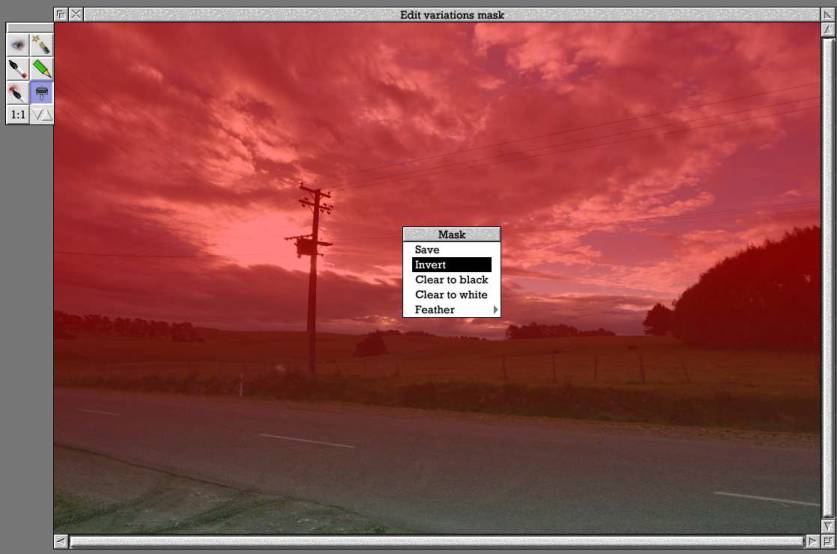
A bit of a contrast boost
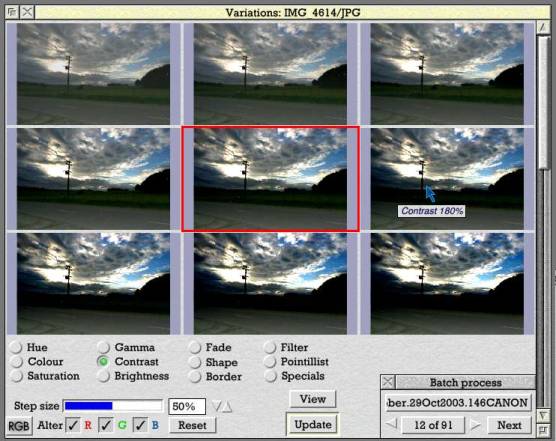
And an additional increase in saturation gives us:

Similar masking techniques can be used to selectively sharpen or soften areas
of an image to reduce the impact of distracting elements, simulate shallow depth of field
and make subtle changes to colour tones. With some lateral thinking it can even be employed
to remove the 'red eye' in a flash photo.







